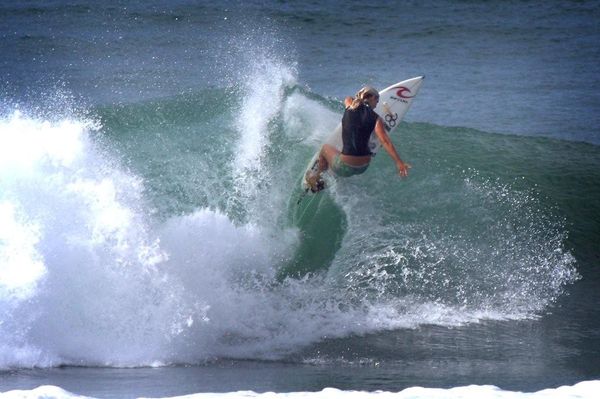Women’s Surfing: Better Performances – But Why Now?

When I first started attending surfing events in Australia almost 30 years ago, there were few girls surfing and competing; and if there was a women’s event you would be lucky to get 20 girls attending. It just wasn’t something girls did, nor was it socially acceptable.
Because of the low numbers the standard was generally poor, with the girls only performing minor moves and with a high error rate. As a result of this poor performance level, the girls division was seen as a minor part in the contest schedule, and often they were discriminated against by the contest officials. For example, if the surf became really bad, the decision was always, “put the girls on”. This was so the boy’s divisions could get the better surf conditions on any given day. Even at the world tour level, the touring women professionals, really struggled to finish their waves consistently, and definitely not in any exciting manner.
Over the subsequent years, women’s surfing steadily improved and the standard rose, with peaks in performance being displayed by the likes of Lisa Anderson and Layne Beachley. But now over the last couple of years, the performance level has really increased. It seems to me there have been a few main causes for this phenomenon:
1. There are simply more girls surfing. With a broader base, the higher the peak possible. So Carissa is partly created by the sheer numbers of girls surfing. In Men’s surfing, with a base of probably 20 million surfers globally, you get champions like Slater and Fanning. Whereas in the girl’s population, there is a much smaller base, so therefore you realistically can’t expect to achieve a comparable peak in performance. In actual fact, the Kelly Slater of women’s surfing is probably a champion in some other sport.
2. Most of the girls come from surfing families. In the early days, many of the girls came from families that didn’t surf, so although they were supported somewhat, their parents didn’t really understand or fully support their daughters as they do now.
3. It is socially accepted more now for girls to be surfers. Surfers are a part of every level of society, meaning that they are supported everywhere they go in many instances.
When you compare the performance levels between the boys and girls however, there is still a long way to go for women’s surfing. The base of the female surfing population is still too low, meaning that the current champions aren’t being pushed by a mass of surfers coming up, like the men’s champs are. The men have to be ON, otherwise they will get beat by some hot young guy hungry for his moment in the sun, and possible long career at the top level. Professional women right now are being pushed by possibly only 20 of their peers globally, in reality not enough to make those girls hungry to push their surfing to ever-higher levels.
So what I see coming for women’s surfing is a plateauing-off of this noticeable improvement in overall performance. There is a proviso to this however – if one of girls focuses their surfing into getting into the air, and doing it in the heat of battle, then the sport for women, with again lift to new heights. It will come, not sure when, but it has to. I wonder who that girl will be?
